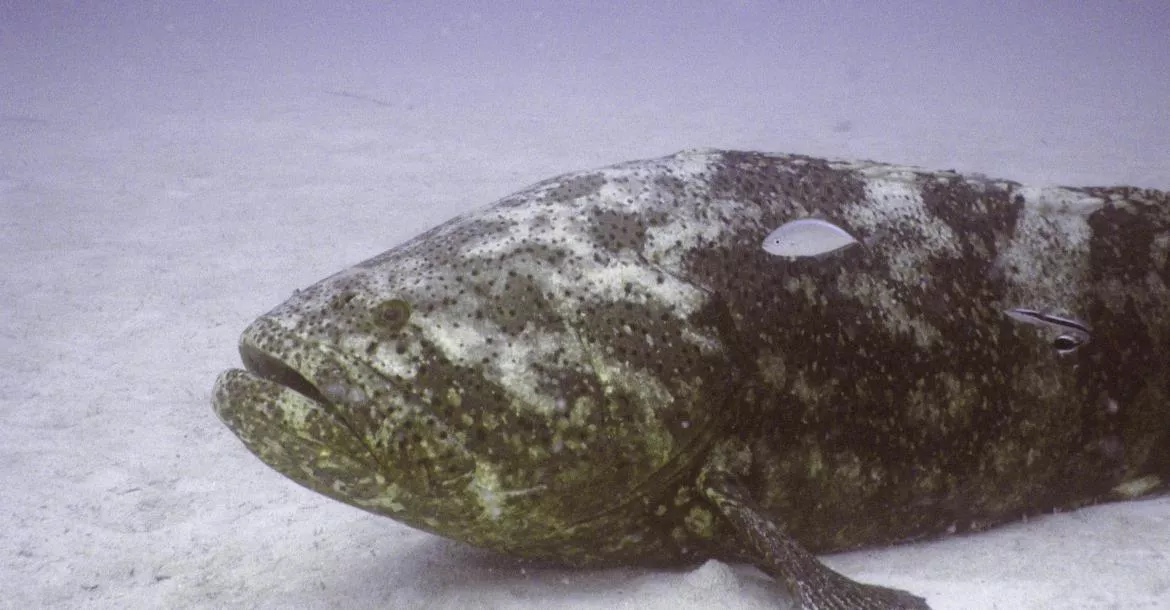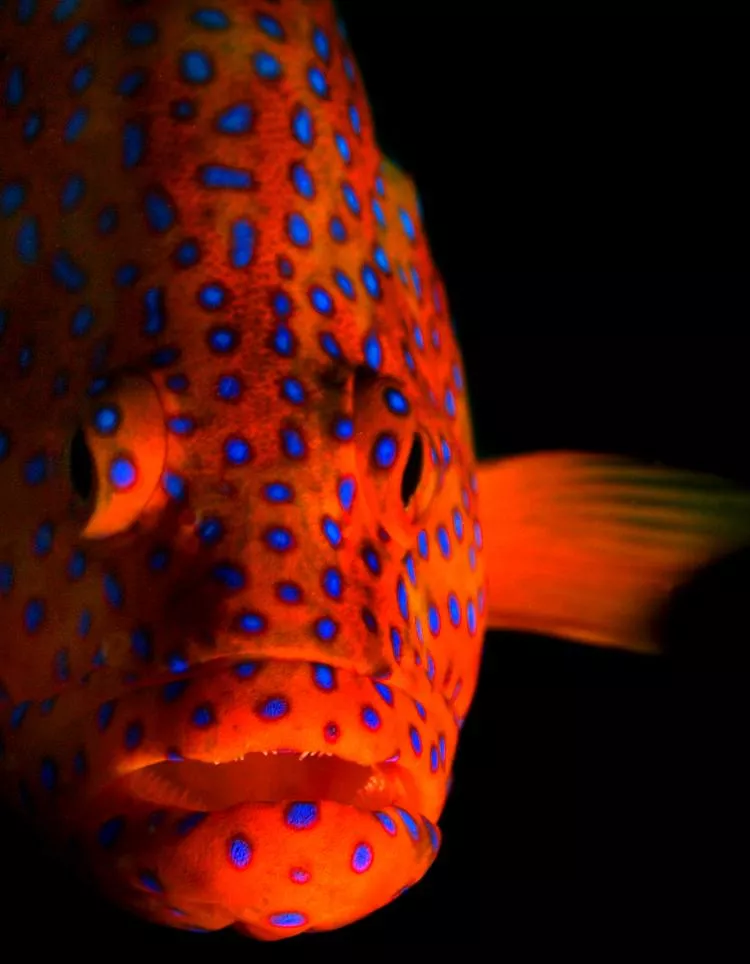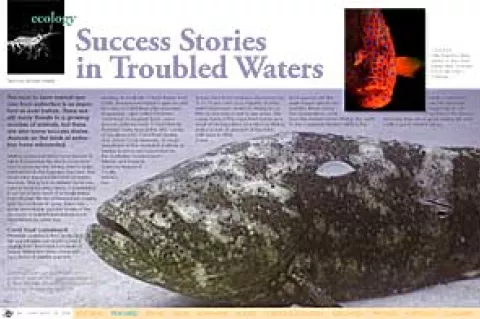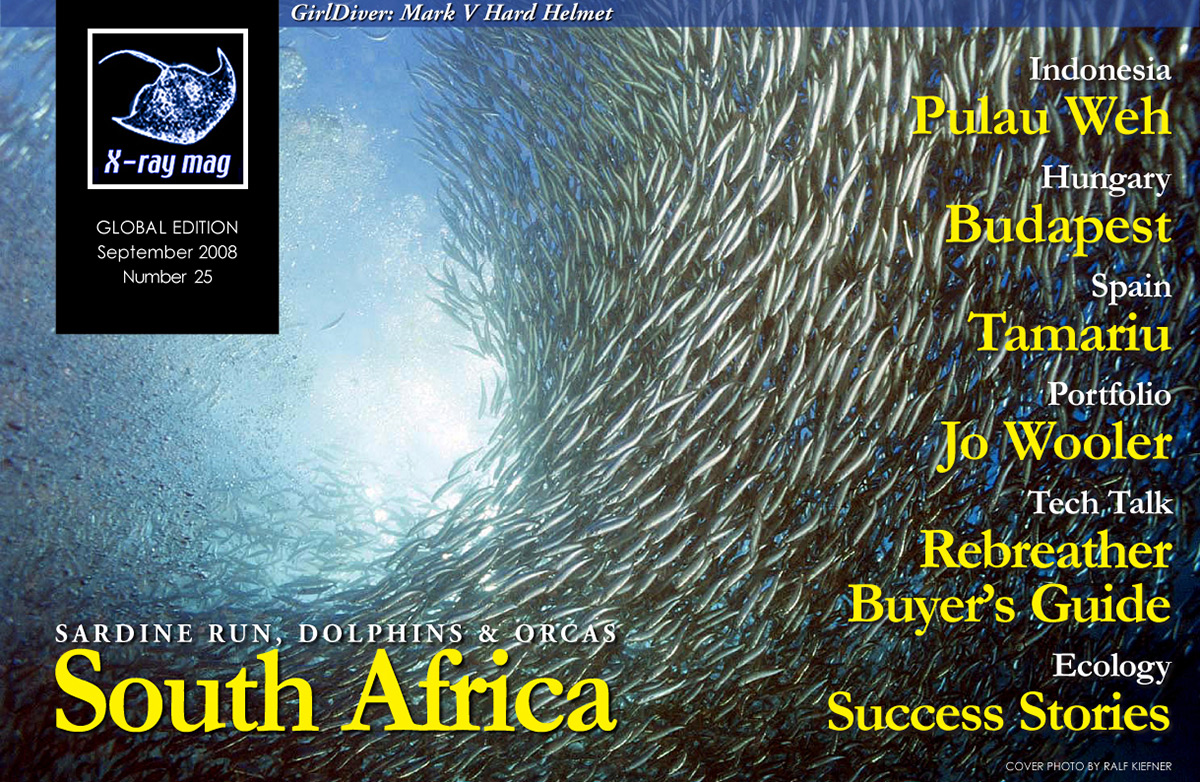The race to save animal species from extinction is as important as ever before. There are still many threats to a growing number of animals, but there are also some success stories. Animals on the brink of extinction have rebounded.
Contributed by
Marine protected areas have proven to allow threatened fish stocks to recover and to increase the fishing yield in adjacent areas. In the Egyptian Red Sea, five years after the establishment of marine reserves, fishing has increased by 66 percent in neighbouring areas. Conservation is not an empty word, it actually helps. Even though the list of threatened marine species continue to grow, there are some remarkable success stories of the recovery of animal populations once threatened by extinction.
Coral trout comeback
Dramatic evidence that protected fish populations can bounce back rapidly from the impact of years of heavy fishing has been obtained by a team of marine scientists working on Australia’s Great Barrier Reef (GBR). Researchers report a spectacular recovery in coral trout (Plectropomus leopardus)—also called common coral trout or Leopard trout—numbers on unfished reefs.
A team led by Professor Garry Russ of the ARC Centre of Excellence for Coral Reef Studies and James Cook University, Dr Hugh Sweatman of the Australian Institute of Marine Science and supported by the Australian Government’s Marine and Tropical Sciences Research Facility (MTSRF), has found coral trout numbers rebounded by 31 to 75 per cent on a majority of reefs, which had been closed to fishing for as little as one and a half to two years. This come back of the coral trout came as a result of an imposition of a strict no-fishing policy across 33 percent of the total GBR area in 2004. Coral trout species are the main target species for reef line fishers along the Queensland coast from the Eastern Torres Strait in the north to the Capricorn Bunkers area in the south. Coral trout are the favourite target fish for all sectors of the fishery because they are a good eating fish and collect good market prices.
100 individuals left
Another dramatic success story is the survival of the northern elephant seals (Mirounga angustirostris). Hundreds of thousands of northern elephant seals once inhabited the Pacific Ocean from Baja California, Mexico to the Gulf of Alaska and Aleutian Islands. They were slaughtered wholesale in the 1800s for the oil that could be rendered from their blubber. In the late 1890s, it was estimated that only 50 to 100 individuals were left. The only remaining colony was on the Guadalupe Island off the coast of Baja California. The Mexican government was slow to react, but was the first to give protected status to elephant seals in 1922. The US government followed suit a few years later when the seals began to appear in Southern California waters. Since that time, elephant seals have continued to multiply exponentially, and they have extended their breeding range as far north as Point Reyes. Today, there are approximately 160,000 northern elephant seals.
Recovering, but still endangered
Another example which yet can’t be called a success story, but shows that protection can help to save a species from extinction. The Goliath Grouper (Epinephelus itajara) populations in the eastern Gulf of Mexico are still on the IUNC Red list as Critically Endangered, but showing good signs of recovery. Intense fishing pressure by recreational and commercial fishing contributed to the population declines of goliath grouper. Goliath grouper is the largest of the western north Atlantic groupers. It can reach about 455 kg / 800 lbs and over 2m total length. Their slow growth, longevity, and large size at sexual maturation make them especially susceptible to overfishing.
All harvesting of the Goliath Grouper in federal waters of the south-eastern United States (including the Gulf of Mexico) has been prohibited since 1990 by the South Atlantic Fisheries Management Council and the Gulf of Mexico Fisheries Management Council, and in the Caribbean since 1993 by Caribbean Fishery Management Council.
According to IUCN, it has been indicated that the ban on spear-fishing in the upper Florida Keys has significantly and beneficially influenced the average size of groupers, although their populations in this region have not reached stable levels. A study by Southeast Fisheries Science Center from 2003, indicates that the U.S. goliath grouper population has a about 50 percent chance that the population will have recovered to by 2006 and about a 95 percent chance that it will recover by 2012.
Not too late
The International Union for the Conservation of Nature (IUCN) has identified more than 16,000 species threatened with extinction. The risk of extinction for many species may have been seriously underestimated, according to new research published in the journal Nature. Well known studies also show that all species matter. Because too many species in a region become extinct or are too low in numbers, the ecosystem itself unravels. According to researchers there is still time to reverse the trend, the but only if quick action protects depleted species more effectively and saves ocean habitats by creating new marine reserves. ■






























